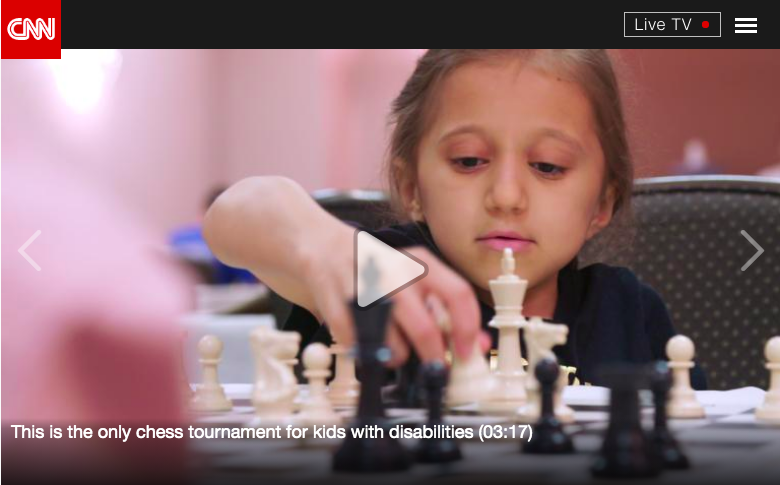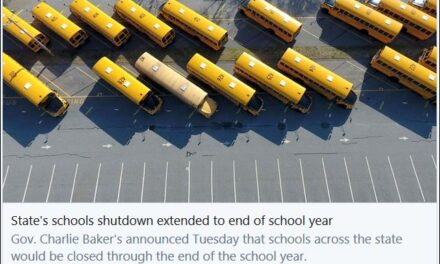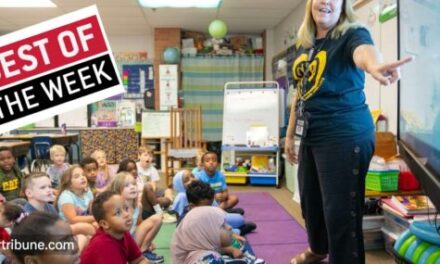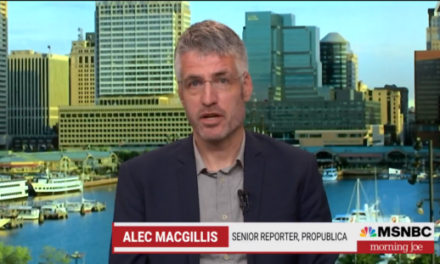Concrete examples and smart tips show how to feature more student voices in education stories — and why it’s so important.
By Amy Silverman
Imagine a sports story about a high school football championship that didn’t include a quote from a player, or a news segment about bathrooms for nonbinary kids that doesn’t feature an interview with a student. How about an expose on school cafeteria food devoid of comments from the people expected to eat that soggy lettuce?
No self-respecting editor would let one of those out the door.
And yet just about every day, I read, watch, and hear stories about students with disabilities – particularly intellectual disabilities – that don’t quote the main subjects.
It’s essential that we as journalists — and particularly journalists who cover education – do a better job of including these voices in our stories. Not only does including them offer unique perspectives and put faces on topics, it presents a model for the rest of society, where people with disabilities often don’t have a voice.
Asking them to speak in our stories helps crush the stereotype that people with disabilities don’t have opinions or ways of expressing themselves.

CNN got it right with this story featuring students with disabilities.
Special ed is a rich vein for education reporters. It’s underfunded and poorly executed in pretty much every way, in every place. There is abuse, mismanagement, and corruption to be exposed.
At the same time, there’s no shortage of feature stories to be written about the lives of students with disabilities, as well as on the intersection of disability with science, health, sports, art, and more. And it’s not just K-12. College programs for students with intellectual disabilities are popping up all over the country.
But the execution of those stories can be tough, particularly when it comes to covering the students in a meaningful and respectful way.
CNN got it right in August, with a feature (above) about a chess tournament designed for students with various disabilities. The students themselves were interviewed and shown participating in the tournament.
“I want them to be afraid on that board, and know that I can do it,” Anna Miller, 11, says during the segment as she’s shown making her moves on the chessboard. Miller has osteogenesis imperfecta, also known as brittle bone disease, and uses a wheelchair.
More common is the kind of story KXAN, the NBC affiliate in Austin, Texas, ran in early October, a feel-good piece about a middle school student with Down syndrome who became a cheerleader.
The short segment featured interviews with the girl’s mother, father, coach, and principal – but not the girl herself. She’s pictured waving from the football field; there’s no explanation as to why she’s not included in the story. The reporter could not be reached for comment on this omission.
Last year, the Indianapolis Star published a story about another young woman with Down syndrome who made the cheer squad at her college, George Mason, but was not invited to join a single sorority. The story quoted family and school officials – but again, not the student. EmmaKate Fittes, the reporter, has left the Star and now works at Chalkbeat. She declined to comment because she no longer works at the paper and says she doesn’t want to discuss the family without their permission.
I get it. It’s tough to get interviews with students with disabilities, and to tell meaningful stories about them in general. It can be hard to get permission for an interview, and even if you do get one, difficult to understand what a student with communication challenges is trying to say. I often worry about saying the wrong thing or offending a student or parent.
Full disclosure: I didn’t think much about this topic until I had a daughter with Down syndrome. Sophie is now 16, and I watch people make assumptions about her all the time. It’s certainly not just journalists. At a restaurant, a waiter will approach our table and ask me, “Would she like something to drink?” even if he has to interrupt Sophie in mid-conversation to ask.
Invariably, I’ll gesture to Sophie and respond, “Why don’t you ask her?”
It’s true that not all people with intellectual disabilities are capable of answering the question, “What would you like to drink?” – let alone questions posed by a journalist. Some with a physical disability like cerebral palsy might be tough to understand. But it’s always worth a try. And it’s important to include an explanation if an interview isn’t possible.
The truth is that it’s hard to get an interview with any student, let alone those who may have trouble communicating and might be sheltered by their parents and other adults.
Then again, no one said journalism was going to be easy.
Sign up here for a free newsletter featuring the week’s best education news and newsroom comings and goings.

Great advice about interviewing students (or anyone else) with a disability.
Here are some tips that might help, from journalists who cover people with disabilities.
Susan LoTempio, a longtime journalist and member of the advisory board of the National Center on Disability and Journalism, is a wheelchair user and expert on disability issues, which she’s written about for NCDJ and Poynter.
She offers great advice for interviewing anyone with a disability – for example, don’t lean on a wheelchair.
Always identify yourself to someone who has a visual disability.
Don’t cover your mouth when interviewing someone who is hard of hearing.
Don’t pet a service animal.
Beyond that, use the common sense you’d apply to any interview.
LoTempio and other experts told me that including students with disabilities in stories isn’t much different from including any student.
But it is more important than with other interview subjects to word your questions carefully. If you ask a yes or no question, you might get just a yes or no answer.
Stina Sieg, Western Slope reporter at Colorado Public Radio, is a master at putting her subjects at ease, tackling hard stories, and nailing interviews. She’s done many stories about students and other people with disabilities.
“It’s a real dance of trying to draw out how they really feel about something while not putting any words in their mouths,” Sieg says. “The challenge isn’t so much that a kid has a disability, but that a kid is a kid.”
To learn more about how the media covers education, follow The Grade on Twitter and Facebook.

This story from the Lens features quotes from a student with disabilities.
Marta Jewson, education reporter for the Lens, a nonprofit newsroom in New Orleans, suggests bringing to such stories the same kind of persistence that any story requires.
Her in-depth education reporting on charter schools has uncovered malfeasance and poor decision making, and the narrative aspects she brings to these topics take them to the next level. You remember characters such as TJ, a student with bipolar disorder she covered in a recent story.
TJ’s attorney and mother say he was illegally moved from setting to setting and ultimately sent home to complete school online, according to Jewson’s story, which ran in August.
“I just sat at his kitchen table with his mother and had an interview and his voice brought a lot of power to the story because he was giving us information that only he could give us from his perspective,” Jewson says.
TJ described for Jewson the conditions in his school. He called it “jail” and showed her a video of a seclusion room. He says he was placed in seclusion more than once; school officials denied that. He also described having to wait weeks for a laptop computer and how terrible it would feel to return to the school after being away from it.
At the student’s request, she referred to him only by his first name. Privacy can be even more important for a student with a disability than for others, she says.
“It’s important to think about how we name and identify kids in stories these days and thinking about future employment and how you’re describing a disability and what it might be,” she says.
The information might live on forever online, creating employment problems and other issues for students, especially those with an invisible disability.
Jewson always gets verbal permission from parents before she interviews any student, disabled or not – though she doesn’t skip interviewing other sources who know and understand the students.

This story featured the voice of a woman who uses a communications device.
Sieg also makes sure to interview others who can add context and understanding, while keeping the student center stage.
“Especially when you’re talking to a teacher, they can talk about the growth they’ve seen and the journey that this person’s been on.”
Early in her career, in 2008, Sieg wrote a story for the Post Independent in Glenwood Springs, Colo., about a woman (above) who had cerebral palsy. The woman, a student in an art class, had both physical and intellectual disabilities, and used a communication device to make words with letters and pictures.
Sieg interviewed the woman’s mother and teacher, and showed both interacting with the student, whose name was Chelsea. She also took the time to ask Chelsea about some of her hopes and dreams. From the story:
“Chelsea kept looking up and smiling. She continued writing, naming the places she hopes to visit (`london china japan’), her favorite movie stars (`william mosley skandar keynes’) and members of her family (`uncles mike dan jarosz’).”
Even in radio, this kind of approach is effective, Sieg says. She doesn’t worry too much about a source being hard to understand – there are always ways to add context — and she tries to incorporate sounds like those made by a communication device.
“I find that really powerful,” she says.

KCUR story from 2017: Kansas Standard For Federal Education Law Excludes Thousands Of Minority Students
Sometimes, the student with a disability won’t make the cut – but the interview can still give the reporter a deeper understanding. Jawanda Mast, who lives in Olathe, Kansas, is a fierce advocate for her daughter, Rachel, who is 20 and has Down syndrome.
Mast recalls a reporter doing an extensive interview with Rachel for a 2017 story for KCUR, a National Public Radio station in Kansas City, Missouri.
The story was about a complicated issue – who gets a high school diploma, based on achievements and curriculum modifications. Rachel’s photo appears with the online version, but she’s not in the story.
Mast nonetheless appreciates the reporter’s efforts.
“She did a really good job of asking her questions and letting her answer them,” she says.
That’s a rarity, Mast says. She raised Rachel to be an advocate, she says, bringing her to Washington, D.C., from an early age to lobby.
She counsels other parents of kids with disabilities to do the same, telling them, “You need to start early, helping your child find their own voice. They don’t have to communicate verbally.”
Often, it never occurred to them, she says.
“Their own parents don’t think that their children have their own voice, so why would we expect anyone else to?” she asks, adding that when a reporter calls, she’ll say, “Would you like to talk to my child?”
When the answer is yes, Mast stays close. Rachel communicates well, she says, but does get confused and needs prompts. Once a reporter commented to Rachel that people with Down syndrome often have heart defects and asked her if she did. Rachel said yes. Mast had to jump in with a correction – Rachel has never had any heart issues.
I asked to speak with Rachel about her college experience — she is studying at Missouri State University at a new program detailed in a story in the Springfield News-Leader. (The reporter did include a quote from Rachel.)
Mast arranged for a three-way call.
“I went to a sorority party last night,” Rachel tells me, after a bit of prompting from her mom. It was called the Mallard Ball, and the theme was camouflage.
“I’m living my dream,” Rachel says several times.
The best thing about college: “I get to have roommates and suitemates with me in college.”
The toughest thing: “The homework I have to work on. I get extra help with my homework, but sometimes it’s hard.”
Her goal: “Sometime I live on my own. To be an independent woman. And my mom told me you have to live your dreams and that it’s okay to live by yourself, to live on your own….My mom is a really great mom and she is the best mom I have got in my heart.”
Mast chimes in, joking that she’s surprised Rachel doesn’t say that the best thing is being away from her parents.
“That’s right,” Rachel says. “I love my life in college. I want people to know that sometimes it’s good to get outside your comfort zone and do your part.”
I couldn’t have said it better myself.
Previously from Silverman: Writing better stories about students with disabilities.















